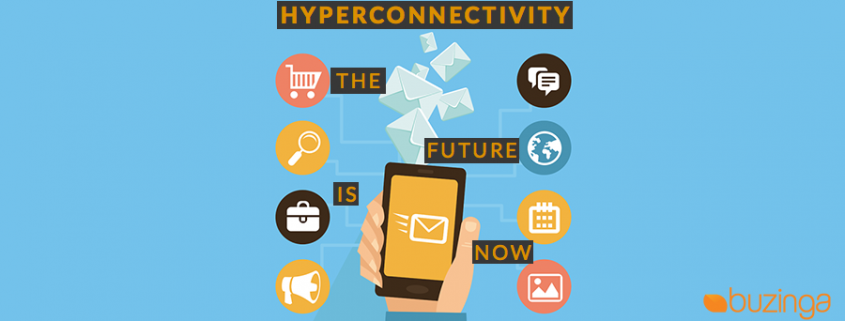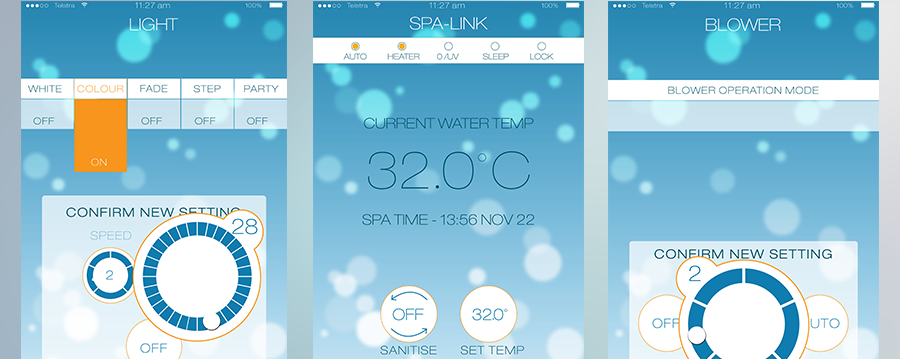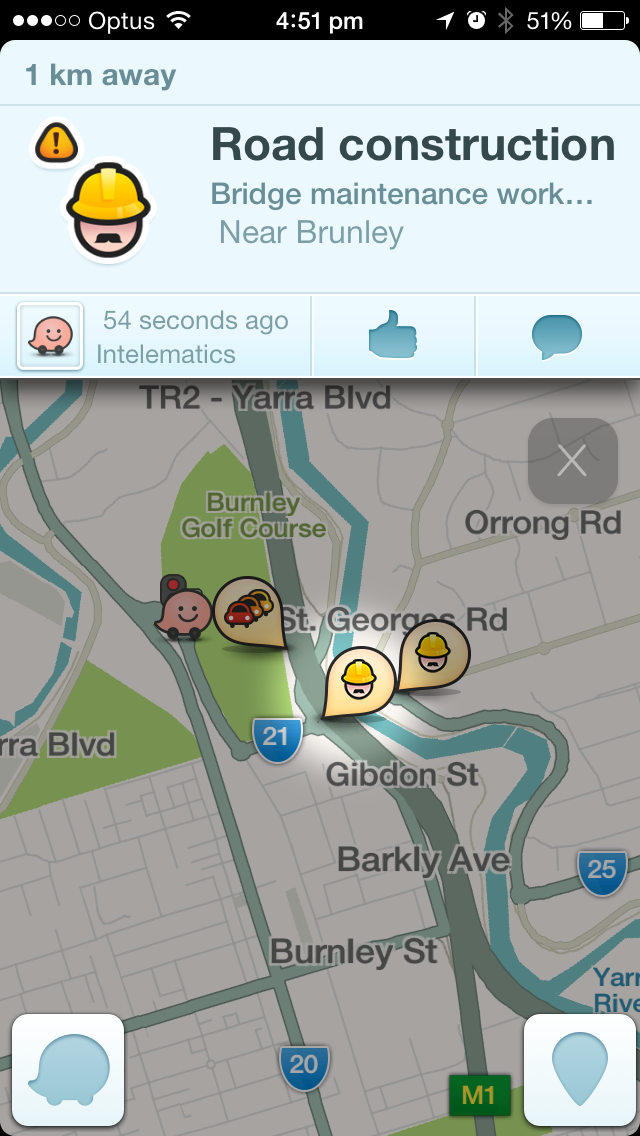Hyperconnectivity: The Future Is Now
Are you familiar with the concept of hyperconnectivity in mobile marketing?
It’s something that’s increasingly becoming part of our everyday lives, even if we aren’t aware of it.
Whilst you’re reading this article, you would have at least one mobile device on you.
It’s not out of the question that you might even have 2 or 3.
We tend not to think about the cloud of connectivity that surrounds us 24/7. But, everyone that carries a smartphone is connected in some way.
The Apple iCloud for example, seamlessly links all your Apple devices together. It doesn’t matter if you’re using an iPad, your MacBook or your iPhone, you’ll never miss your next iMessage.
“By 2020, it’s estimated that there will be 75 billion connected devices”
When you think about it, these days, any device that uses electricity or a battery is becoming connected in some way.
This is a bit cheeky of me, but I must mention the SpaLink app we built for SpaNet.
The SpaLink app lets their customers control their spa from anywhere in the world.
Can you think of anything better on a cold winters night than arriving home to a preheated spa? I certainly can’t.
Who would’ve thought that a phone could connect with a spa…?
The funny thing is just over 48 months ago, none of this technology really existed.
Many of us track daily activity using the FitBit or a Nike Fuel band. This data is then transferred to our phones displaying meaningful fitness information.
We’re even able to take our blood pressure and transmit it back to the doctors office using our phones.
Google Maps over the past few years has become more and more sophisticated.
The app takes the data of its billion users and calculates traffic congestion patterns in cities all over the world.
If Google maps sees you’re on an inner-city freeway moving at 10km per hour, it comes to the conclusion that you’re stuck in one of Melbourne’s horrific traffic jams.
This information is shared on Google Maps so other drivers can re-plan their travel route.
Individuals follow this same pattern with their own devices.
- First we connect; then
- We share the things important to us – our fitness results, location information, the weather etc.
- When other individuals attain this information, they learn from it. As a result they perform tasks more effectively and efficiently.
The sequence of connect –> share –> learn provides the method for creating an app in our hyperconnected society.
Uber is an example of a business that thrives on mobile app hyperconnectivty.
This sequence is what makes the app so successful and why Google has invested $258 million into the company.
- The user connects with the app.
- The user shares their location and their intended destination.
- The closest Uber driver learns the passengers location and destination and is dispatched to pick them up.
So… The question I pose to you is, how can you integrate hyperconnectivity to create a more convenient and seamless solution for your users?
Firstly, we’re going to consider these 4 examples:
Bluetooth Radio & Uber
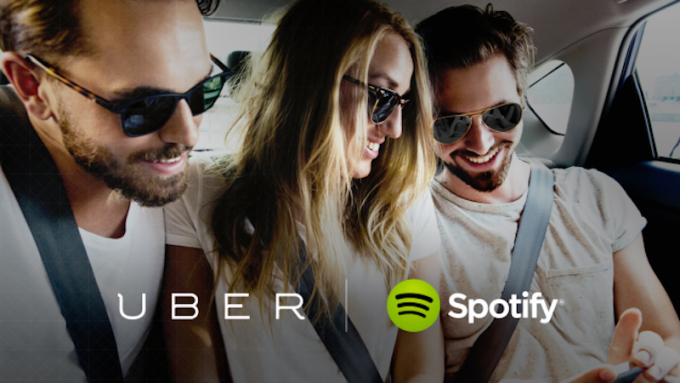 Source: TechCrunch
Source: TechCrunch
Have you used an Uber lately?
Uber and Spotify have decided to work together to improve the experience in an Uber.
As you would probably know… Some of the drivers music can be quite ‘average’ to say the least.
It’s now possible to connect your smartphone to the drivers in car stereo system and play music from your Spotify account.
So now you can listen to your own music instead of the drivers music.
Music selections can be made straight from your phone. They’ll quickly start playing through the driver’s app connected to the stereo.
There’s no data cost to the passenger beyond the premium Spotify subscription.
This integration shows how Uber could allow more in-car personalisation and control.
It also demonstrates how Spotify can strengthen the value of its paid subscriptions though an ecosystem of third-part applications.
To use Spotify in Uber, you go into your Uber app’s profile page and “Connect Spotify” to your $10 a month premium subscription.
It’s fantastic to see two extremely innovative companies coming together to create a seamless integration of both their services.
Now, instead of being stuck talking to a ‘chatty’ Uber driver, you can relax and listen to your favourite tunes.
Google Maps Showing Hotel Prices
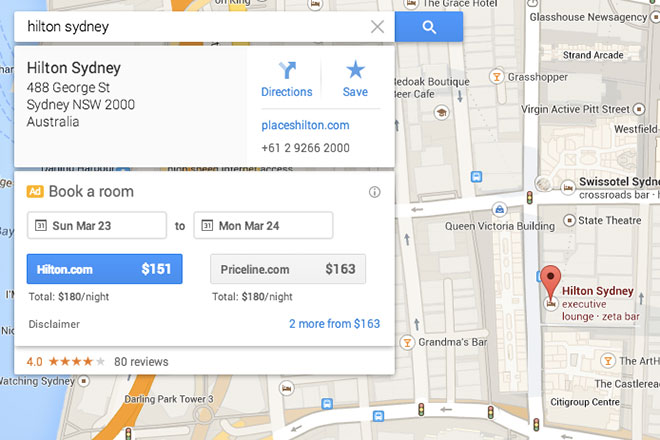 Source: WebProfits
Source: WebProfits
This one’s a personal experience of mine that ties in with the topic of hyperconnectivity.
I’m going to Bali on a holiday and was searching for hotel locations on Google Maps.
Whilst clicking on the places I wanted to stay, it gave me the option of inputting my check-in and checkout dates.
Following the input of this information, Google Maps gave me the two lowest prices for those hotels.
This pricing information was sourced from online travel agencies such as Expedia and Hotelscombined.
Google’s recognized that it’s the number one destination when people are searching for hotel locations.
Partnering with various online travel agencies, it saves you time and money by displaying the two best prices for the hotel.
This is such a great partnership! And is certainly saved me hundreds of dollars on hotels during my trip.
- Users benefit from up to the minute best prices on hotels when searching in Google Maps.
- Google benefits from tracking a users data to further improve the service.
- Online travel websites gain highly qualified leads, right from Google Maps.
It’s a win/win scenario for everyone!
Google Maps Suggesting You Take An Uber
 Source: Daily Dot
Source: Daily Dot
Just say your destination is over 6kms away and you’re on foot.
Google maps now suggests that you should get an Uber.
For users with Uber installed on their Android or iPhone, Google Maps now shows the estimated pickup time, fare, and travel time to the destination in an Uber.
A single tap on the Uber card seamlessly transitions you into Uber app (Deeplinking) and sets the destination address. This is then passed on to your driver upon pickup.
The feature is now live for users in over 30 cities around the world, with more cities to come in the future.
This is yet another example of two companies strategically joining together to improve the service.
Waze – Crowdsourced Traffic Updates
This app was recently bought by Google, reportedly for around $1 billion.
Waze draws on GPS technology to learn more about the traffic flow of roads. It uses this information to then provide drivers with better traffic routes.
The app has a community of over 45 million users who each contribute information (crowdsourcing) to the app.
This includes petrol prices, traffic accidents, roadworks, speed camera location, traffic jams and more.
Based on all this information, the app will calculate the most time effective route you should take to your destination.
How often have you said to an Uber driver, “Oh! I know a shortcut!”
Well, you don’t need to know one anymore.
Google have recently integrated this information into the Uber driver app.
This app calculates the best and more time effective route the Uber driver should take from point A to B.
This is all based on real-time, crowd sourced information.
How You Can Use Hyperconnectivity
The best way to use hyperconnectivity is to look for other companies that have technology that complements your application.
If you think that building a partnership with another company is going to create a better experience for your users, then start the conversation.
At the end of the day, doing this is going to help you solve your problem in a more convenient and seamless manner.
This will increase the user experience of your application, leading to higher engagement levels and more users in the long run.
There’s no shortage of technology available to put hyperconnectivity to work.
Connect –> share –> learn provides the best model for hyperconnectivity.
But it all begins with sharing aspect.
A user’s already connected. That connectivity provides the platform to launch your app and create a whole new level of creative problem solving.
As your users master the new power of sharing, this power will create both creative and disruptive business opportunities, literally from thin air.
What possibilities do you see with the mobile applications of the future?
Share it with me in the comments below or on Twitter.
More content you need to read:
Latest posts by Logan Merrick (see all)
- Ep 18: Collective Campus’ CEO on Intrapreneurship and Corporate Innovation - December 20, 2016
- 50 User Engagement Strategies For Planning Memorable Mobile Experiences - December 19, 2016
- Latest Data: App Monetisation Trends And Drivers 2015-2020 - November 25, 2016

